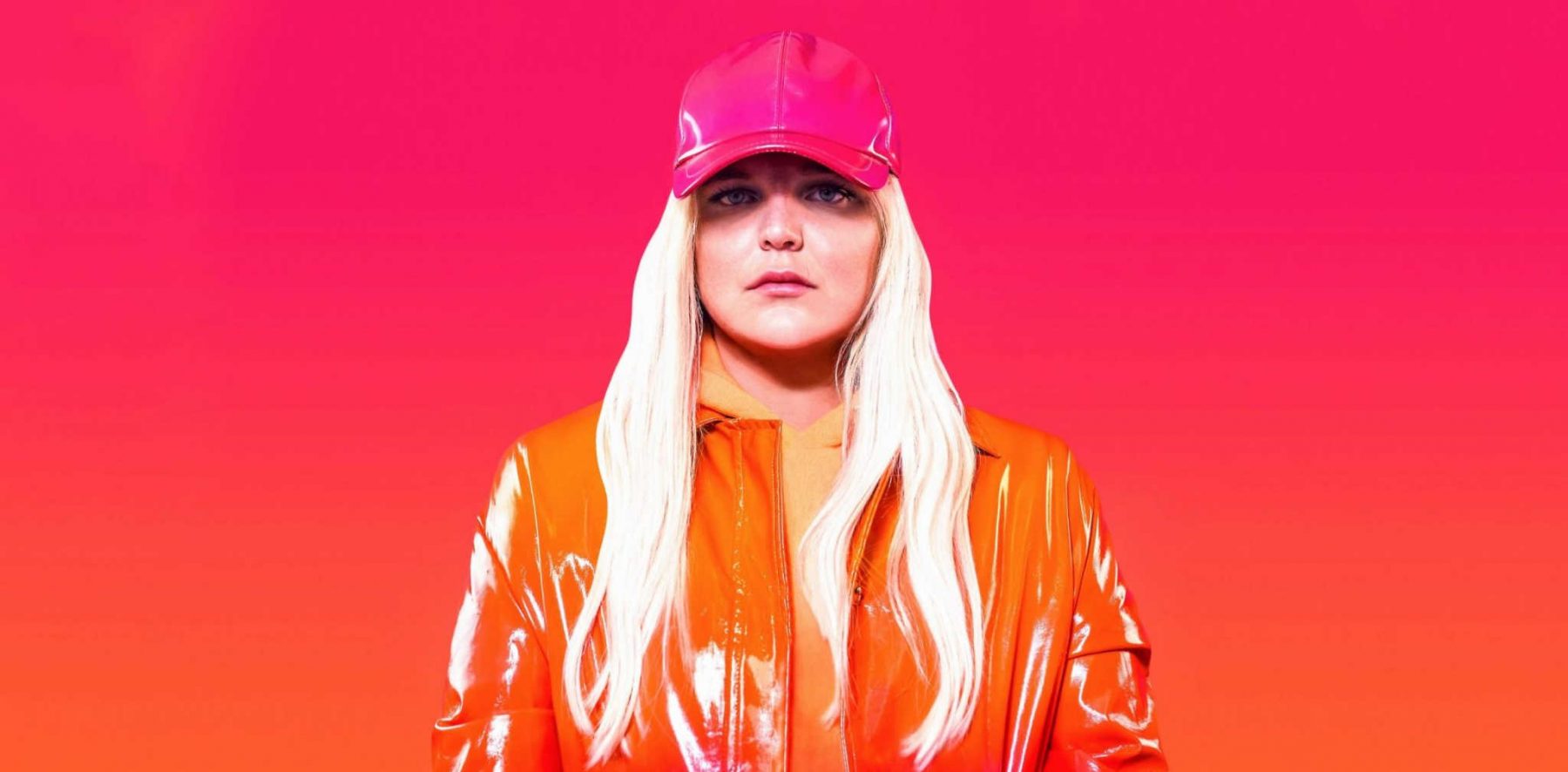
Dance Monkey Business
Behind the scenes with one of the biggest hits to come out of Australia...
Tones And I’s ‘Dance Monkey’ spent an astonishing 24 weeks at number one in the Australian singles charts, shredding the previous record of 15 weeks set by Ed Sheeran’s ‘Shape Of You’ in 2017. Going to number one in more than 30 countries, ‘Dance Monkey’ was also the best-selling single worldwide for 14 weeks and counting (at the time of writing). Staggering success like this does not go unrecognised, and the single won Tones And I four Aria awards (Best Female Artist, Breakthrough Artist, Best Pop Release and Best Independent Release), and has generally been the big story of the Australian music industry for the last half year.
The story started with Tones And I, aka Toni Watson, busking in Byron Bay in late 2017. It’s the dream of every street busker to be discovered by a passing-by member of the music industry elite, get signed and make it big. Normally it’s the stuff of Hollywood legend; but on Watson’s first day of busking, music lawyer Jackson Walkden-Brown walked by and left his card. Soon afterwards he was managing Watson. With his encouragement, Watson spent most of 2018 busking and gigging, using a simple set-up with Roland Go:Keys and Casio keyboards, and a Boss RC300 loop station. As the crowds got bigger, Walkden-Brown and Watson teamed up with Lemon Tree Music, a Melbourne management company that has experience in breaking buskers (they also have Tash Sultana on their roster).
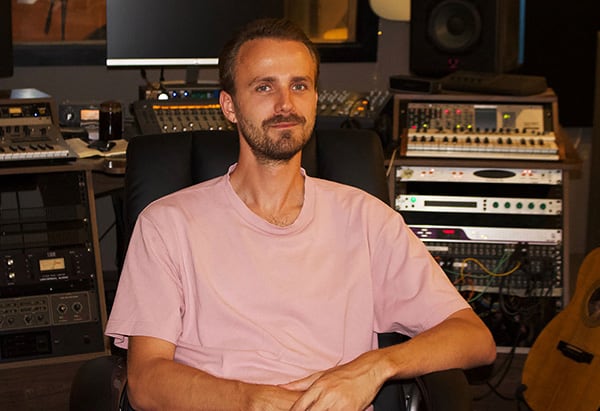
In early 2019 it was decided that Tones And I was ready for the big time. It was a good call because her first single, ‘Johnny Run Away’, went double platinum in Australia. ‘Dance Monkey’ was next, and gradually took Australia and the world by storm. The tongue-in-cheek YouTube video, in which Watson plays a person who has proudly grown old disgracefully, certainly will have helped. Ironically, in the lyrics of ‘Dance Monkey’ Watson complains about being turned into a ‘dance monkey’ by demanding audiences when she’s busking. Hundreds of millions of streams later, she surely has no cause for complaints…
BEHIND THE SCENES
The impact of ‘Dance Monkey’ has been so great that it has divided time into a ‘before and after’, not only for Watson but also for the Australian music industry, and naturally also for many of the people involved in the making and promotion of the single. On the musical front a central role was played by Konstantin Kersting, who engineered, mixed and produced the track, and was nominated for Aria awards for ‘Engineer of the Year’ and ‘Producer of the Year’. Via Skype from his Valley Underground studio in Brisbane, Kersting muses on what happened…
“It is amazing! Everything to do with that song has been incredible, but it was so unexpected. Toni and I made a song that we thought was cool, and also a little bit weird and wonky – we certainly didn’t expect it to go crazy like it has. I think it’s now had almost two billion global streams and is still the world’s number one selling single, which is super wild. And it’s opened up quite a few doors: people are interested in working with me who might not have been before.”
“Most of the stuff I’ve done in the past was more left field – alternative rock, alternative pop and so on. But recently I’ve been getting more interest from artists in the mainstream world. I’m booked out for the rest of the year and I’m also doing a fair few international things which means I get to travel more. Last year has definitely been the best year of my professional career so far. It’s very exciting, and my management and I are doing our best to build on it.
A NEW AUSTRALIAN SOUND
Even before ‘Dance Monkey’ changed everything, Kersting was in an interview early last year credited with “shaping a new Australian sound.” Despite living in Australia, propelling an Australian artist to the top and giving the Australian music industry a higher worldwide profile than ever before, the thing about Kersting is that he isn’t actually Australian. Kersting is from Germany, and arrived on these shores in 2007 as a teenage exchange student. Having grown up in Berlin, he was attracted to beach and non-urban lifestyles, and initially settled in Caloundra. Next up he travelled around Australia for a bit before settling in Brisbane in 2009, where he further pursued a career in music.
“I started playing violin at age four or five,” recalls Kersting, “and was taught with the Suzuki method, which is all about listening. That gave me a foundation of being able to play by ear, rather than reading. I was playing in orchestras and stuff like that, but let the violin go when I was about 16 because it was cooler to play in bands. I switched to bass guitar, and played that in a jazz band for a while. I learned to play guitar, keyboards and some drums, and also learnt music theory.”
After settling in Brisbane, Kersting got a Bachelor of Music degree at Queensland University of Technology. It was here that his musical ambitions took an unexpected left turn. “One of my lecturers at University was Yanto Browning, and I still remember the eye-opening experience of the first lecture by him. It made me realise that music production was what I wanted to do with the rest of my life. I became obsessed with it. Moreover, Yanto needed an assistant for his work at Airlock Studios, which is owned and operated by Ian Haug of Powderfinger. I worked my way up at the studio from assistant to second-in-house engineer, and after a few years I went free-lance.”
INFLUENCES & SUCCESSES
Kersting calls Browning his ‘mentor’ and adds that he was also influenced by star mixer Michael Brauer (Coldplay, John Mayer), who he witnessed during a Mix With The Masters seminar in France in 2016. “I learned things about mixing from Michael Brauer that have become part of my approach. I also saw how other people at the seminar worked, and that also gave me a different perspective. As a producer it’s easy to repeat yourself, because if you have success with something you’ll get requests to do something similar. After the Mix With The Masters seminar I changed my mix approach, and I also got more into the electronic side of producing. Some people are amazing studio engineers, but they would not know how to create a cool trap beat. I wanted to be able to do both and so I had to re-learn a lot of things. Electronic productions are 90% of what I work on now, often with female pop singers.”
Over the last years, Kersting gained success with Australian artists like Waax, The Jungle Giants, Tia Gostelow, Mallrat, and The Rubens, working in the roles of engineer, mixer, producer and/or co-writer. “The Waax’s Holy Sick EP (2015), was a breakthrough for me, because it was one of the first times that a recording I did made it to the radio. Another milestone was The Jungle Giants’ album Quiet Ferocity (2017), on which I did additional production, engineering and mixing. That became quite a big album in Australia, and still is. That is where things really started clicking for me.”
Soon afterwards Kersting worked with up-and-coming artist Mallrat, which was an example of an electronic production with a female singer. “We did two tracks together, ‘Better’ and ‘Groceries’, which both became big songs in Australia. They were not only my first forays into electronic music production – where the vocals are almost the only thing that’s recorded and the rest is programmed – but also into co-writing with an artist. I had been, and still am, part of the band The Belligerents, and I’d been writing with them, but Mallrat was the first time I was co-writing outside of that band, and it was very exciting.”
All this eventually led Kersting to work with Toni Watson, a connection that was made by his manager Scott Armstrong of Converge Management. “We first did ‘Johnny Runaway’ together at my studio, and I think she wrote ‘Dance Monkey’ afterwards. She came in and played me a busking version, with a loop pedal and the drums and bass from her keyboard. I ended up producing and mixing three singles on her first EP, The Kids Are Coming, the other track being ‘Never Seen The Rain’. My challenge as a producer with Tones was to take songs that were based on loops and turn them into cohesive tracks that could be played on the radio.”
VALLEY UNDERGROUND
Before going more deeply into Kersting’s work with Watson, a quick look at the place where they collaborated is in order. Located in the basement of an office building in Brisbane, Kersting has been in Valley Underground since 2015. The studio has a hybrid analogue-digital set-up, with an eight-channel SSL X-Desk and quite a few outboard units and instruments – the latter reflecting his background as a musician.
Among the instruments are a Korg Minilogue, Moog Voyager, Behringer Model D, Fender Jazz Bass and a Stratocaster. The outboard includes the Lynx Aurora 16, Apogee DA-16X, Crane Song HEDD, UA LA-3A, Teletronix LA-2A, UREI 1176, Smart Research C2, Drawmer 1968, Sound Workshop 262 Spring Reverb, Roland R-880 Digital Reverb, Roland RE-200 Space Echo, and an API Lunchbox fitted with a JLM 99V Preamp, a JLM LA500 comp and a JLM PEQ500. Monitoring is from Auratone 5Cs and Quested VS2108s.
“The X-Desk is my summing desk,” elaborates Kersting, “and I also use my Cranesong HEDD converter on every mix. I think of it as a tape machine. I have the X-Desk mapped out so that certain instruments always go through specific channels. The desk gives me a bunch of headroom. It sums to the HEDD, and on the master bus insert I have the hardware JLM PEQ500 and Smart C2 compressor, before printing back into Pro Tools. The JLM is small, like a 500-series, and it does the same thing as a Pultec but with a few added features. The C2 is like my SSL compressor.”
“I also have some hardware inserts that I switch on and off. The LA-2A is really great on vocals and lives on my vocal bus, but to be honest I’ve jumped over to the UAD LA-2A plugin because I can’t really hear the difference except that the plugin is less noisy. The LA-3A is really great on bass, and I use the SSL EQs on vocals, bass, and wherever needed. I tend to use the Drawmer compressor on my drum bus. I also could not live without my Space Echo, which is a really cool piece of kit. With regards to the instruments, the Moog Voyager has an awesome sound and no emulation comes close.”
“Working at Airlock earlier in my career I mixed with way more analogue gear and went crazy splitting things out and doing all manner of out-there compression using parallel outboard and so on, but doing recalls is just so frustrating when you work like that because it takes hours. For that reason I have been working for a long time with just a few hardware inserts, mostly with fixed settings where I keep things at the same level and push the signal into them, and a hardware master bus chain.”
“I worked with Tones And I like that, but now that I’m doing more and more pop stuff I find myself scaling back the outboard that I use – especially on the inserts. I now use the outboard more on organic sounding projects, whereas with pop, where you want things to sound very big and clean, I don’t always find outboard that useful. I just retain the JLM PEQ and the C2 on the master bus; for the rest I’m moving towards working fully in-the-box.”
“Even in a controlled environment like a studio I can barely tell the difference anymore between in-the-box and out of the box. Seeing how the world’s number one mixer, Serban Ghenea, apparently has been doing mixes in-the-box since the early 2000s, and analogue champions like Andrew Scheps and Tchad Blake have also moved to mixing in-the-box, I am going that way as well. Instant recall, as well as the ability to be mobile and do mix revisions where ever I am, are crucial.”
TONES & KERSTING
Toni Watson arrived for her first session at Valley Underground early in 2019. Kersting describes their modus operandi. “The starting point for every song was different. For some songs we had demos. We had a really good demo for the first song we did, ‘Johnny Runaway,’ which she had worked on with another producer. There was no demo for ‘Dance Monkey’; all she had was an Instagram video of her performing the song, and a few live videos. She then played me the song in the studio the way she busked it live; it was based on a few loops, with the main 8th note keyboard line, the four-to-the-floor kick in the drop/chorus, and the drop bass line.”
“The arrangement was pretty sparse, but it gave me a good idea of what was needed to turn it into a pop production. The main thing was making the drop/chorus feel really good, and that meant making the bass line pump and the kick sound strong. We also created that delayed gratification thing where the song starts really simple, builds into the second verse and drop/chorus, and then the last chorus has these big group vocals and it all comes together. I don’t like it when every verse and chorus are the same, I find that it often gets boring. You need to make sure something different is going on every time. We did all this in a day, and it was a lot of fun.”
“We didn’t use any of the sounds from the live busking version; improving on those was one of the main aspects of the production. Her keyboard sounds were cool and gave a really good idea of what needed to happen, but the bass sound, for example, was from a Casio keyboard and we replaced that with my Moog Voyager, which got used on a few other things too. I added an 808 to the pre-choruses, made sure the claps sounded really good, and combined about five kick sounds in the chorus to get it to sound right. With a song like this, where the first chorus is just bass, kick, some snaps and her voice, the sounds have to be great and they have to drive the song forwards.”
“The first thing we laid down was the piano, because it’s the most important and driving part. Toni played that in from a MIDI keyboard. I could have drawn in the keyboard part but I think it’s more exciting for artists to actually play the parts in – it gives them a bit of a live feel with slightly different velocities and so on, even if you quantise it. In this super-perfect world, people respond to things that sound slightly more human. And, of course, it’s nicer for the artist to hear the record and think: ‘I played that!’ We started with an actual piano sound, but later added a more synth-like sound from the Korg MiniLogue. I quantised the MIDI part and ran it through the MiniLogue. I also added a kind of steel-pan sound to make it more contemporary. After the keyboard part we put down the beat, and then the bass. Toni played some parts, and I played some other parts – including a guitar to emphasise some root notes. I think Toni played the bass line on an Arturia V6 synth, and I quantised and then swung it to make it a bit more jagged. We then ran the MIDI through the Voyager and combined it with the Arturia sound. Getting the bass sounding right was a really big moment in the studio. Toni was initially reluctant to use pads but we ended up adding some, including a Roland Juno, and Solina and Farfisa organs.”
“After everything was done, Toni sang her vocals. To record her voice I used a Miktek CV4 large-diaphragm microphone going into my SSL XR627 preamp, through the SSL XR425 EQ followed by the Urei 1176 and into the computer via the Lynx Aurora 16. Toni did four or five takes, nothing more. She’s a really good singer, and I didn’t do anything dramatic to her vocals. The way it sounds is just the way she sang it. It’s unique, unlike anyone else, and I guess that’s why people have taken to the track. There’s very little tuning, just a few manual corrections on some notes. My main challenge was controlling the high midrange her voice has, using EQ and multiband compression. I did that during the mix.”
MIX MONKEY
As Kersting’s last remark suggests, mixing is a separate stage for him. “I try to keep production and mixing separate. I obviously create a mix during production to get a good idea of the track, with basic EQ and vocal effects and things like that, but when it comes to mixing properly I go into a different zone. I get all my busses in, make sure everything in the session is exactly where it should be, print any software instruments, and then I start mixing. I tend to avoid doing rough mixes because you end up battling them; it’s nice to have some room to wiggle on the actual mix – you don’t want the ‘demoitis’ thing.”
“The production of ‘Dance Monkey’ took a day. I did a mix the next day, and later on Tones had the idea of adding the group vocal at the end. She recorded that where she lives and sent me the files, and I worked them into the session and did a mix revision. So in total the song took a day and a half for production and a day and a half for mixing. Organising the mix session the way I like it involved creating all the aux effect tracks, including my template for the vocals, and also for the instrument group tracks with group A for the keys, B for drums and bass, C for guitars, and D for the backing vocals.”
Kersting’s Pro Tools mix session for ‘Dance Monkey’ is a curious thing totaling 116 tracks, with 22 aux tracks at the bottom (including the group tracks A through to D), and another 16 group aux and effect aux tracks throughout the session. There’s extensive routing from audio tracks that are grouped to several bus tracks, with parallel compression tracks alongside, in a structure inspired by Michael Brauer’s mix approach. From top to bottom the session contains the drum tracks (red), bass tracks (beige), guitar tracks (light blue), keyboard tracks (green), and vocal doubles, harmonies and leads (different shades of pink). All aux tracks are dark green, apart from five vocal bus parallels (orange), the A to D buses (dark red), and the mix print track at the bottom (dark blue).
DRUMS
The signal chains and treatments of the drums and vocals are the most involved. Kersting traces the outlines of each to clarify his mix approach, lifting out only the most important plugins. “The session has two kick verse tracks, going into a verse kick group aux with the Slate VMR, and also a send to an effect aux track with the FabFilter Pro-R reverb. Then there are five chorus kick tracks, three of which go to a ChorusKick Aux – again with the VMR and a send to a Parallel Drum track with the SoundToys Decapitator and the Kush Audio UBK1 for parallel compression – while the other two kick audio tracks go to the main Drums bus. Most of the drum tracks go to that Drums aux bus, which has the Drawmer 1968 hardware compressor on the insert, a SoundToys Decapitator for some saturation, and yet more compression from the UAD API2500. The Drums aux group track has sends to the SPL Drums aux with the Native Instruments Transient Master plugin adding some attack and sustain to the drums, and also to the Big Parallel aux with a Kush Novatron set to ‘Punish’ mode. The Novatron is there because the drums in the chorus needed more impact. There’s also a Pro-Q2 which rolls off some high end, because when you do parallel compression you sometimes end up with super bright stuff. I created a blend of these four drums aux tracks to get one cohesive sound, and they all go to Bus B at the bottom of the session.”
VOCALS
The vocals are grouped in three sections: harmony vocals (sounding a bit like a mediaeval choir), group backing vocals, and the lead vocals. The latter are split up over 10 tracks. Each of these sections has its own group aux, with tons of plugins. Kersting clearly put most work into the lead vocals. The audio tracks themselves have quite a few plugins, and the main lead vocal aux, Lead Voc 1, has nine inserts and 10 sends. There’s also a supporting lead vocal aux, Lead Voc 2 aux, with five inserts and five sends, adding more treatments. Together this adds up to a total of 28 plugins on just the lead vocal aux tracks, which are on top of the two to four plugins on each of the lead vocal audio tracks.
“All these plugins only do a little bit,” explains Kersting, almost apologetically. “The audio of the lead vocal is split over several tracks so I can treat each slightly differently, and there’s one audio track with the Tal Vocoder for the middle-eight. All audio tracks apart from the vocoder track (which goes to the Bus D for backing vocals) go to the master vocal bus, Lead Voc 1, which has on the inserts a combination of de-essers, compressors and EQ. The first five sends go to aux effects tracks with a slap, a long delay, a reverb, a small plate, and the vocoder track.”
“The second five sends go to the five orange aux tracks further down in the session, which each have different compression; there’s the Kush Audio UBK1, the Slate emulation of an 1176, a Slate VCA compressor, an Empirical Labs Arouser, and a Decapitator. These five aux buses are all sent to input four of my Apogee DA-16X, with me blending them to create a cohesive vocal sound. I’m mixing into compression here, inspired by Michael Brauer. The rest of the session is sent to my Apogee via my A to D group busses, with Bus A (keys) and Bus D (backing vocals) going to inputs 7-8, Bus B (drums and bass) to inputs 1-2, and Bus C (guitars) to inputs 5-6.”
SUMMING UP
“These channels are then laid out over my X-desk, which as I mention earlier is my summing mixer. From there the mix goes via my Crane Song HEDD, JLM PEQ and Smart C2 compressor back into Pro Tools. I have a master bus in Pro Tools, and I put whatever sounds good on the day on that. In this session I have the Slate VMR, a Neve console emulation, iZotope’s Ozone 7, the Slate Digital FG-X mastering processor (which is adding some transients) and the Kush Audio Clariphonic DSP. I love the Kush stuff; it sounds like a blanket has been lifted off your mix. The chain ends with the Slate VTM tape emulation and the FabFilter Pro-L.
“I do this multi-bus compression on all my sessions, for example in my recent mix of ‘Live In Life,’ the single by The Rubens. A session like that is a bit different because there were live drums and lots of guitars, resulting in a far larger session with a bunch of more weird stuff going on. As part of my drive to go completely in-the-box, I didn’t use any hardware inserts on that mix.”
Konstantin Kersting clearly is on a roll. His mix approach involves some pretty circuitous routing, but it seems to help bring out the magic of the tracks that he works with. More major hits surely are on the way…


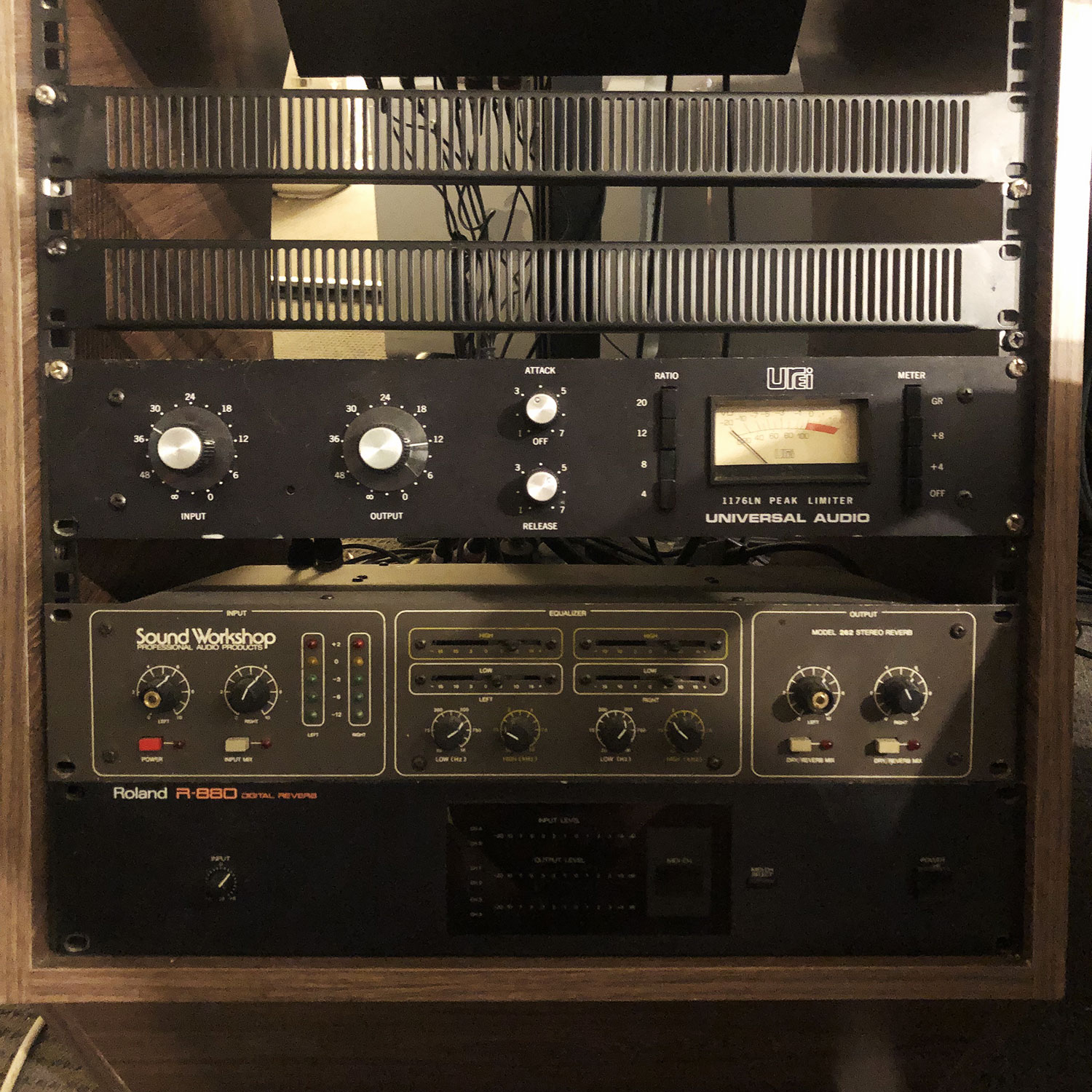








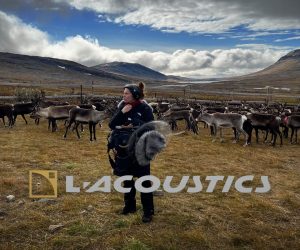







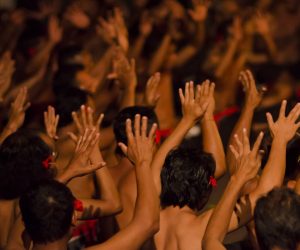

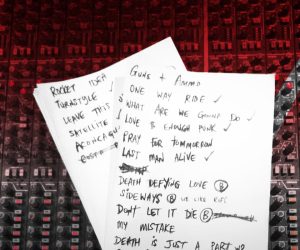


RESPONSES